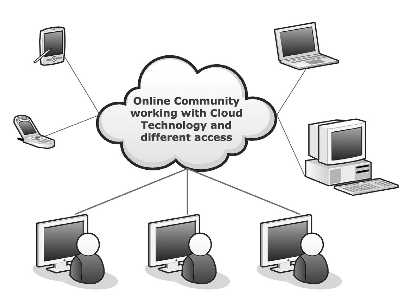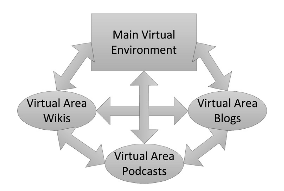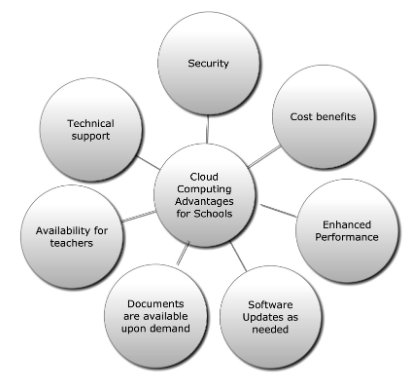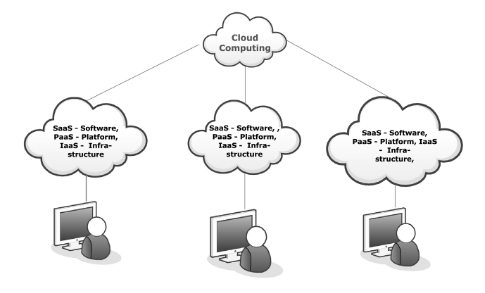ABSTRACT:
Colleges and universities need to keep up with the latest techniques in communication so that when students begin their educational pursuits they are using the up-to-date technology. Not all colleges and universities have the flexibility and budgets to keep current on all forms of technologies but being able to provide students with available options will help colleges and universities to increase student population.
Colleges and universities have different options and not all technologies are costly to implement. The key question is: Once students are admitted and enrolled, can the colleges and universities keep them engaged in their academic pursuits? This can be a challenge; however, by offering new technological advances, this makes the offer and acceptance more binding since students want to be socially connected.
The virtual community can be a pretty powerful tool for communicating in today’s socially networked environment. There are many faces of socially connected networks that include Facebook, Myspace, or LinkedIn. Providing students an area where academic issues and discussions can ensue can encourage academic development. Developing a virtual community using a cloud service can socially increase networking interaction.
This networking approach can also increase the performance of students and provide the services that the school may be able to offer at a lower cost to students. This collaborative approach to learning can be useful for students, teachers, and staff as an interactive collaborative approach to virtual education.
This book includes discussions and evaluation of virtual communities, cloud technology, use of virtual communities, challenges, advantages, e-collaboration, development, quality assurance planning, and future trends. The goal is to provide an introduction of the different areas noted above and plant a seed for considering how various virtual approaches to education could benefit the classroom.
VIRTUAL COMMUNITIES USING CLOUD TECHNOLOGY
Developing alternative approaches to education has become more and more predominant and has opened the door to learning in new environments. The purpose of this monograph is to provide readers with information that teachers, students, and staff can use for developing virtual communities using cloud technology. Teachers, students, and staff can develop a community of learning while sharing information and data.
This development can be based on best practices that are established for a virtual community. Cloud technology can be an asset for the storage of data and information that teachers, students, and staff can use since space may be limited on the schools servers. Information that has a focus on big data can become increasingly difficult to manage so data and the cloud may be considered a symbiotic pivotal technology for managing a large amount of data.

The Virtual Community Working in the Cloud.
Cloud Technology:
The environment that is created using cloud technology will be an important part of the development of the virtual community. Not only the cloud technology will impact the virtual community but it will also be the catalyst for collaborating and managing the community. In order to understand how far our technology has grown, it is important to understand some part of the history that brought the Internet to the point it is to day.

Virtual Environment and Different Areas.
The Cloud and the Community:
The key to development of an effective cloud community is to make sure that there is up-to-date technology, the ability to secure information, and a way to house and archive the information. One of the most important aspects of cloud computing is its development that creates an environment using different aspects of technology.
Mousannif, Khalil, and Kotsis suggested that there are various concepts of cloud technology that include “virtualization technologies, Web services, service-oriented architecture (SOA), and distributed computing” (Mousannif, Khalil, & Kotsis, 2013, p. 159). Virtualization can be used as a way to limit space as well as the ability to operate and function in a multiple usage state. If various locations are set up, this may be referred to as multiple locations or virtual machines that all operate the same (Mousannif et al., 2013, p. 159).
ADVANTAGES DEVELOPING A VIRTUAL COMMUNITY USING CLOUD TECHNOLOGY
Importance of Virtual Communities:
Developing and managing a virtual community has its challenges. However, a virtual community can also have many advantages. One of the biggest advantages of a virtual community is that it can open the door for communication via e-collaboration that is paramount.
The key is to set up the virtual community in a way that allows individuals with the same interests, ideas, and information to collaborate as well as share and engage in conversations that will expand knowledge, skills, and abilities. This can be pivotal for the e-learning environment, as this form of collaboration can be held outside of the classroom at a time convenient to all participants.
Community Setup:
The virtual community setup can be an easy process if schools or universities have providers who can work with them while addressing the specific goals and objectives laid out for the virtual community. Meeting with a cloud provider will ensure that a discussion about specific services that are needed are also aligned with the virtual community’s goals and objectives.
Learning Tools:
Since learning tools are an important part of the virtual community, an evaluation process would be useful. Microsoft and Google are available to provide colleges and universities with educational applications as part of a free service.
Collaboration And Sharing Ideas:
Cloud services can be valuable to an educational organization that goes beyond the storage of data, increasing performance, and managing software. Additional strategic areas that are important as noted in Figure 2 are considerations that Isaila (2014) suggested:
- Cost savings
- Increased performance
- No need for updating software
- Availability of documents for students
- Availability for teachers
- Technical support is available but may be a part of the cloud providers
- Security and confidential areas to monitor

Figure 2. Cloud Computing Advantages for Schools.
CHALLENGES DEVELOPING A VIRTUAL COMMUNITY USING CLOUD TECHNOLOGY
Challenges of a Virtual Community:
Challenges are the part of any project and can also be the part of a virtual community. Some challenges may include identifying and working with a cloud provider, establishing a direction for the virtual community, selecting software to use on the cloud and keeping participants active in the virtual community.
Problems in the development of the virtual community can inhibit the future development and growth of the community. Also, specific drawbacks like the lack of budgeting could negatively impact the forward progress of the virtual community.
Monitoring the Virtual Community:
Monitoring a virtual community is essential for determining whether the activities in the community are making progress. Glassmeyer, Dibbs, and Jensen discussed how students feel about the virtual environment and when students were queried about what they felt was important for virtual communication: “Students frequently brought up virtual community in their responses.
Students mentioned feelings of connecting and communicating were vital to their online education experience, especially sharing perspectives with one another” (Glassmeyer, Dibbs, & Jensen, 2011, p. 28). That feeling of joining and communicating on a level out side the virtual classroom brings about a connectedness beneficial for students and teachers.
Keeping the Virtual Community Up to Date to Increase Participation:
Information needs to be accurate, reliable, and valid. Therefore, it is necessary to have checks and balances in place. The ability to manage information and keep accurate records will be paramount as the community grows.
The validity of the information will provide reliable results as students and teachers access and use the information. In order to keep the virtual community up to date, it is essential to have a way to run checks on the information and monitor this on a regular basis. Since a database can be a useful tool for archiving and housing data and information, reliable checking of the accuracy and validation of the database is needed.
Appropriate Behavior:
Individuals share information in a virtual community, forming a trust between all members’ working toward a common goal. Members of a community want to make sure “that trust has as much of a key role to play in successful online learning as it has in face-to-face learning” (Anderson et al., 2011, p. 358). If there are rules and regulations for the face-to-face learning environment, there also need to be rules and regulations that build trust and thus relationships of the members are developed in the virtual learning environment.
E-COLLABORATION IN AN EDUCATIONAL ENVIRONMENT
E-Collaboration is important for virtual education as well as for a virtual community. Teachers, students, and staff can actively participate and provide critical feedback to manage and improve the virtual community environment.
Al-Zoube (2009) noted that an e-collaborative environment is also referred to as a virtual learning environment (VLE). A VLE is considered an “electronic platform that can be used to provide and track eLearning courses and enhance face-to-face instruction with online components” (Al-Zoube, 2009, p. 59). This is much like using a virtual learning community in that the VLE is an extension of the classroom providing hands-on experience working in a lab or an open forum environment.
Teachers:
A teacher is an important resource for students when it comes to a virtual learning community. A teacher is pivotal in the development of lesson plans as well as teaching. These efforts are evaluated based on quality and planning on a day-to-day basis and can also be useful in the virtual cloud community.
Students:
So what is the student’s role in the virtual community? Students are responsible for taking tasks that are assigned and turning it into useful information that can be used to increase knowledge and move toward career growth.
This is achieved through additional assignments, questions, additional research, and sharing information topics related to assignments. These activities can occur through an ongoing collaboration in the virtual community environment between teachers and students or students and students.
Staff:
So what is the role of a staff member in a virtual community? Staff members may be involved in scheduling, training, administrative tasks, and evaluating the virtual community. They may assist student learning by being available to schedule, train, and evaluate the virtual community environment.
This should be done in collaboration with the teacher and management. Scheduling of events is important and as students and teachers become a part of the virtual community, adequate space and room for different virtual community tasks and functions need to be assessed and scheduled.
DEVELOPMENT OF VIRTUAL COMMUNITIES
Developing the Community—understanding the Technology:
In Chapter 3, there was a discussion on the challenges that virtual communities face when using cloud technology. As technology continues to develop, analyzing how to keep the virtual community up to date is essential.
Options for verifying and validating technology are needed to ensure that it is up to date and is vital to its success. Schools often lack resources for keeping technology up to date; however, utilizing free technology can make it easier on the budget.
Collaborating to Keep the Community Going:
Getting the community up and running can be a challenge. Therefore, collaboration and cooperation are essential. Baglieri and Consoli (2009) noted earlier that there are key areas that are important to be considered when a community is set up and developed. As individuals participate in a community, they also consider how the community can be beneficial for their own purpose.
Participants need to let those in the community who have the same interest and feel free to exchange information that will enrich the community. Some members may feel shy about sharing ideas. In such cases, trust can be an important part of the process in order to encourage their active and open participation.
Incorporating Virtual Communities Into the Curriculum:
As teachers develop curriculum, different areas need to be considered for the virtual community that will impact the delivery and incorporation of the curriculum. Different guidelines and standards for the virtual classroom and the virtual community may affect how curriculum is developed and used in the virtual community.
Since the virtual community is considered an extension of the virtual classroom or the face-to-face traditional classroom, the development of additional materials and resources may be necessary. Teachers may think that this is just additional work that needs to be developed, but actually providing additional resources and materials may enhance the virtual classroom and make the delivery of the traditional curriculum more attractive.
Networking with other Schools:
As students build their virtual network they are also building a strong network by collaborating with others. This network can grow and become efficient and successful as students participate and share information. Forming a network alliance with other schools in the district can be beneficial; this can grow regionally as well as grow on a state level with goals to go to an international level.
Planning for the Virtual Community:
Planning the goals, objectives, and purpose will impact the steps needed for setting up and managing the cloud service and the virtual community. Following is a systematic approach of steps for working through the planning, analysis, and setup of the virtual community.
DEVELOPMENT OF CLOUD TECHNOLOGY
Virtual Community servers, Security:
Cloud technology can be positive for a virtual community because it can assist in many different services. Cloud computing architecture needs to be understood by teachers and staff members in order to create an efficient system. Software as a service (SaaS), platform as a service (PaaS), and infrastructure as a service (IaaS) can be used to set up a SaaS software package, a PaaS platform, and an IaaS infrastructure.
SaaS is a service and is used as the cloud server accessed through an Internet connection. This software is used by those who want to pay for the resource and have access to the cloud service. By using this service, the school only pays for what they want on the cloud and this minimizes storage and space on the school server secured with an SSL protocol.

Cloud Computing Architecture.
Classroom Access, Setup, Resources, Archives:
For a successful community of practice, Campbell and Uys noted that “there are identifiable features to a successful community of practice, and most importantly the ability to sustain the community” (Campbell & Uys,2007,p.19).
Managing the virtual community needs to have some one in place that has features of leadership, participation, distinguishable boundaries and the ability to be a part of the environment. Someone that manages the virtual community and leads the virtual community provides guidance and structure through communication and active participation.
Student Collaboration Access, Resources, Archives:
As trust is developed in the virtual community, Campbell and Uys noted that “communication builds trust. Communication along with trust is a 76 fundamental to building communities, allowing them to grow, change, and achieve objectives” (Campbell & Uys, 2007, p.21). This is an important factor when developing the virtual community and a continued effort is needed as the community grows.
ENSURING QUALITY ASSURANCE IN THE E-COLLABORATION OF THE VIRTUAL COMMUNITY
QA Tools and Techniques:
Quality assurance techniques, tools, and models are needed to ensure success in making decisions forschools, especially as it applies to checking the quality for the cloud and virtual community. Management and teachers will determine how cloud computing and the virtual community will be developed. Managing and evaluating quality techniques and quality tools are a part of the assessment proces.
Quality Plan:
A quality plan is a tool that can be used to manage and strategically align requirements that interpret the data and effectively manage continuous improvement. The quality plan should be used as a guide for ensuring that the environment and cloud services are meeting the expectations of the school.
As the quality of the virtual community and cloud service are evaluated against standards and guidelines, teachers input should be included to determine the efficiency and effectiveness of the community.
Developing a Quality Plan for the Virtual Community Using Cloud Technology:
Storr and Hurst (2001) noted that there are some basic steps that can help organizations and businesses set up a useful quality plan. The framework of the quality plan may use six dimensions for quality. One of the dimensions that Storr and Hurst mentioned was the effectiveness of the service.
Determining a Plan, Tool, and Technique:
Developing a quality plan that is used to manage the strategic planning for the virtual community can be set up using the following elements. The quality plan can be used to guide and manage the quality of the virtual community as well as the cloud environment.
Collect Data for Plan:
The data for the plan can be collected by using the quality plan noted above. A template can be developed using the plan and can be used for measuring, analyzing, and evaluating the progress of the virtual community and the cloud service.
FUTURE OF VIRTUAL COMMUNITIES AND CLOUD COMPUTING
As cloud computing continues to grow, there will be more areas to consider as part of future development, planning, and growth. Arutyunov suggested that “cloud computing is a reflection of global trends on the transition to outsourcing and external services” (Arutyunov,012, p. 178).
This has created not only a new technology but also opportunities for the development of new Internet options and ways to access information using outsourcing and other external available services.
Cloud Service Providers:
Trends continue to expand and grow and Wang, Rashid, and Chuang (2011) noted that cloud computing is the trend for the future as well as cloud providers that are able to host a variety of services. The cloud service providers as noted previously include three different service types: SaaS, PaaS, and IaaS.
FUTURE DIRECTIONS
As colleges and universities continue to move toward future trends and changes, keeping current with new technology and new cloud service providers is needed. The evaluation of new services and providers will be beneficial for schools, teachers, and student.
Continually looking at different options for communication and collaboration has opened the door for new technology. That is why it is important to understand how new technology can be used and how it can impact learning. Keeping up to date with new trends and options for communication will continue to grow. Colleges and universities are continually looking for ways to improve skills, knowledge, and learning through different approaches in education.
Source: American Public University System
Author: Diane Stottlemyer
>> 200+ IoT Led Projects for Engineering Students
>> IoT based Networking Projects for Engineering Students
>> IoT Software Projects for Students